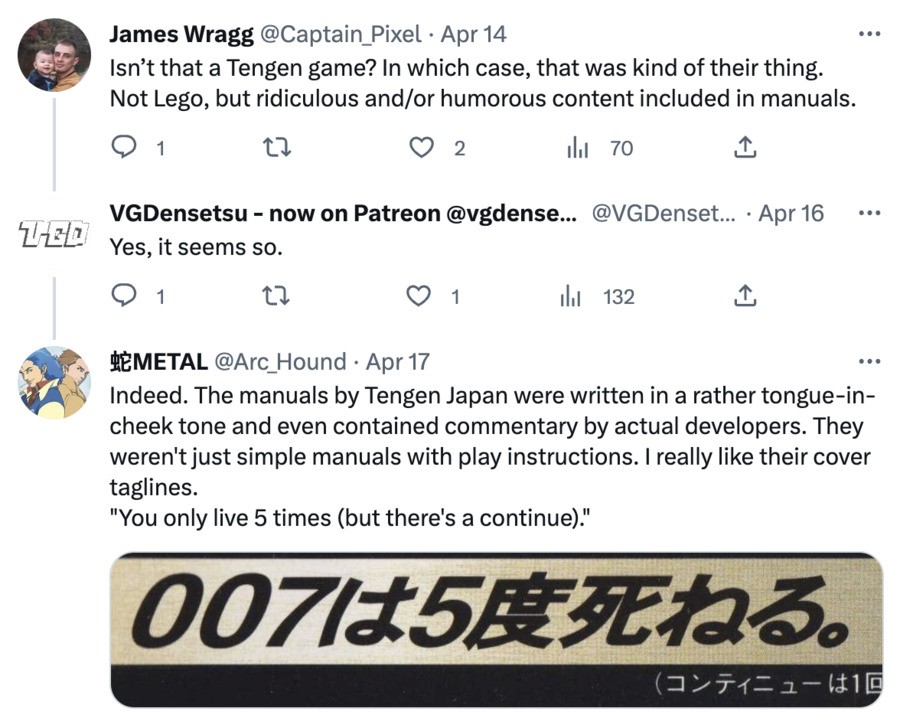
Look, we get it – Lego is popular. It's as popular now as it has ever been, in fact – but that still didn't stop us from making a double-take when we spotted a tweet from VGDensetsu mentioning the fact that, in the manual for the Japanese version of Atari's Rampart on the Mega Drive, there's an entire page devoted to discussing Denmark's most famous toy.
Given that we have a copy of this very game in the Time Extension office, we quickly grabbed it off the shelf to confirm – and yes, there is indeed a page talking about Lego in the manual, complete with a photo of a Lego castle set (because of course there is, given the subject matter of the game).
The page describes the connection between Rampart's castle-building sections and memories of playing with Lego as a child. Here's a rough translation, courtesy of Google Translate:
Rampart reminds me of when I was little, I used to play with Lego at my cousin's house. Lego is a toy made of plastic, like an evolved building block. There are blocks of various sizes and shapes, and each has unevenness and unevenness, so they can be easily attached and detached, and various shapes can be freely created. There are similar toys, mainly diamond blocks. There are probably many people who think of this. As expected of the owner, I'm a friend with a different head. The friend skillfully builds various things such as a train robot. What impressed me most about his childishness was how he skillfully builds walls and boxes by combining blocks alternately, just like building bricks. In particular, I was strangely intrigued by the part where the center bends at a right angle. The ends of the blocks did not protrude at all, and they were all neatly aligned. Maybe he was moved by the beauty of the castle.
Bukiyou
I'm clumsy past unenclosed, and Frustrated...
It would seem that Tengen did similar things with other games released in Japan:

